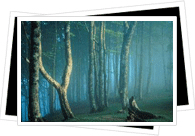
Introduction
The Irati forest is a prime example of a nature excelling in its beauty. It is currently the second largest in Europe with its vast habitat of beech and fir trees. It is certainly a place that defines rest and relaxation and you will have the opportunity to get away from mainstream stress to endulge yourself in a peaceful setting where the only sound is the current of the Irati river.
The sheer beauty
The content of the Irati forest will tease your senses with the strong infusion of scents coming from the combination of diverse plant life. You won't be alone in the forest as, in addition to fellow hikers and outdoor enthusiasts, the Irati Forest is home to a variety of wildlife, such as wild boars, deer and foxes along with a host of birds all adding their unique influence to your experience.
Outdoor excitement
If you want to burn away a bit of the energy you have been saving up, there's no problem at all! The Irati Forest allows you to throw yourself into a spectrum of outdoor sports, such as hiking and mountain biking, though it can depend on the weather as to what activities are accessible.
Religious architecture
You will also notice across your travels a few buildings uniquely placed such as the Chapel of the Virgin of the Snows and the Chapel of Muskilda. Built in the 12th century, it follows the story of a shepherd who found an image of the Virgin Mary when recovering one of the runaways; the herd scattered and the image was dropped whilst they were collected. Upon the shepherd's return the Virgin had disappeared (spooky right?), therefore the church was built upon that site. With all of the constructions around the area, the architecture can be deceivingly modest due to the grand surroundings of the forest.
The Irati forest has one last trick up its sleeve: Basajaun. Known as the lord of the wood, Basajaun is a mystical creature who called the forest home and looked after the wildlife.